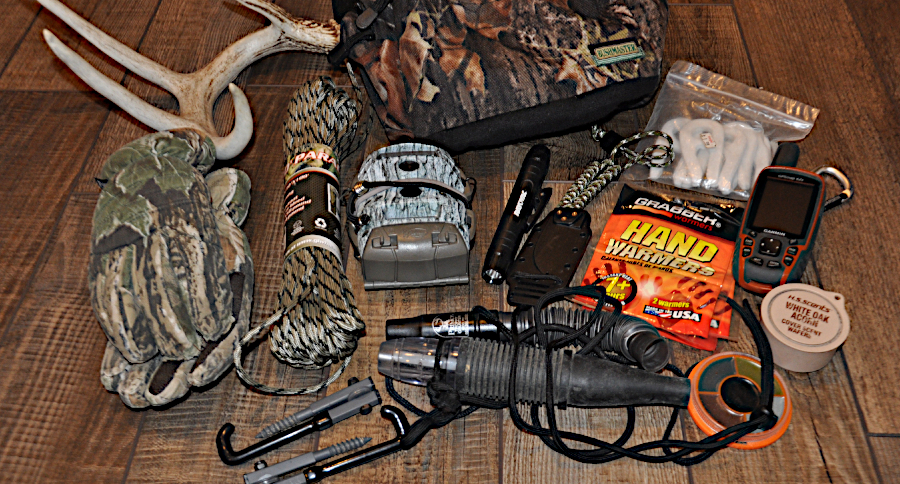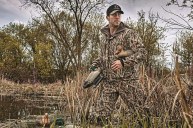Make sure you're prepared for these three types of hunting trips.
If you're planning a major hunting trip this season, it's never too early to prepare, especially if it's a bucket list trip you've been planning for years. But maybe you're uncertain what you should bring to the hunting grounds this year.
Not to worry, we are here to help with suggestions on gear to pack for three dramatically different game species and styles of North American hunting.
So, whether you're going after waterfowl in Missouri, whitetail deer in the Midwest or elk in the Rocky Mountains, you'll be properly prepared for this hunting season's adventure.
Mountain Elk Hunt Gear List
https://www.youtube.com/watch?v=MOmqOLfxaOA
You've spent years building preference points for drawing an elk tag for a top-notch area on public land somewhere in Wyoming, Montana, New Mexico, Arizona, Colorado or Idaho. Now is the time for the hunting experience of a lifetime chasing that monster bull of your dreams.
Note that while this packing list is tailored to elk hunting, much of the gear here is also suitable for high-altitude hunts for other game animals like mule deer, pronghorn antelope, bighorn sheep or mountain goat.
Two big things to focus on here are footwear and hydration. Hunting in the mountains is a whole other animal, especially if you're used to hunting flatlands in the Midwest or Eastern parts of the country. The hunters and hunting guides with the highest success rates are usually the ones who work the hardest for it. You're going to be pursuing big game up and down some very rough terrain. They aren't going to make it easier for you. Work smarter, not harder by buying good quality gear that is up for the task at hand.
Buy your pack for the hunt far in advance of your hunt. Load it up with this gear and test it out thoroughly. Is it comfortable? Does it keep all your gear secure and in place? Is it something you want to wear all day while chasing bugling bulls up and down ridges? If the straps are uncomfortably digging into your shoulders after only a few minutes, it's time to get a different pack. Look for something that not only holds your gear, but also keeps it organized and gives quick access in a pinch.
One last thing before we get to the list. If you're hunting with outfitters, check with them ahead of time. Sometimes the guides will have their own gear list of things they expect you to bring. Some guides will provide some items for you.
- Firearm or bow
- Extra ammo or arrows
- Release
- Extra broadheads & sharpener
- Knife
- Small hatchet
- Saw
- Camo outerwear
- Rainwear (coat and pants)
- Underwear
- Base layers (for warmth)
- Socks
- Quality hiking/hunting boots (broken in ahead of time)
- Gaiters
- Hunter Orange (if hunting in firearms season)
- Gloves
- Hat
- Facemask or facepaint depending on preference.
- Binoculars
- Rangefinder (you can save valuable weight with a binocular/rangefinder combo)
- First aid kit
- Survival kit with emergency shelter/emergency blanket (aka "space blanket")
- Multi-tool
- Flashlight
- Bear spray or bear sidearm (check regulations on what is legal)
- GPS unit and or Maps
- Compass
- Spot or other satellite check-in device
- Appropriate game calls (for DIY hunt or one where guide isn't providing them)
- Cover scent
- Canteen or hydration bladder for pack
- Water purifier or "Lifestraw" device (keep a few water purification pills in the survival kit)
- Snacks for energy
- Hunting license/tags
- A good, compact camera (for the memories!)
- Altitude sickness medication (see our guide on altitude sickness prep for more information)
- Game bags (for packing out the meat from your harvest)
We're also doing a secondary list for gear specific to backcountry camping while hunting.
- Sleeping bag
- Food
- Food utensils
- Butchering gear (if you want to start eating your game right away)
- Cooler
- Camp stove
- Toiletry items (soap, toothbrush, etc.)
- Solar charger/battery pack for cell phone
- Matches/firestarter
Don't worry about trying to fit all this extra stuff into your hunting pack if you're staying at a lodge or the guide has a dedicated hunting camp.
Out-of-State Waterfowl Hunt
If you're interested in the waterfowl hunt of a lifetime, you'll likely be heading to either a prairie state or southern state. Find out where the birds are so thick they blot out the sun!
Thankfully, you don't have to pack as extensively for a waterfowl trip as you do a big-game hunting trip. The packing checklist for a waterfowl hunt stays basically the same no matter where you're hunting in the country.
The only big difference might be warmer clothing for more northerly climates and more bug spray for southern ones. Also, the obvious things. It doesn't make sense to pack your duck waders if you're going to by laying in cornfields in Nebraska for Canadian geese.
- Shotgun
- Ammunition
- Decoys appropriate to the situation.
- Duck/geese calls
- Camo outerwear
- Rainwear (coat and pants)
- Underwear
- Base layers (for warmth)
- Socks
- Gloves
- Waders (if hunting wetlands/swamps)
- Waterproof boots
- Headlamp or flashlight
- Hunting license
- Insect repellent
- Knife
- Game bags
- Cooler
- Boat
- Life vest (if hunting on water)
- Camo netting or blind material
- Snacks (for the downtime)
Thankfully, for an out-of-state waterfowl trip, you're usually staying in cabin or hunting lodge, often courtesy of hunting outfitters. So, packing efficiently to fit everything in one bag isn't usually as important unless you're camping.
If you're hiring an outfitter, call them ahead of time. Odds are, they already have the decoys, boats and blinds taken care of, saving you valuable space in your vehicle on the drive to the hunting grounds.
Midwest Deer Hunting
The midwestern United States are among the best places on the planet to hunt for whitetail deer. Especially if you're a bowhunter. It's where legendary whitetails like the Jim Jordan buck and the Hole-in-the-Horn buck hail from. The gear you'll need is largely going to be based on hunting from treestands.
You might exchange a ground blind on this check list for wide-open, agricultural areas like you'll find in Iowa or central Illinois. Evaluate the type of area you're hunting ahead of time to best narrow down what gear suits the situation best. But at the very least all these items should be a consideration.
- Firearm or bow
- Extra ammo or arrows
- Release and quiver
- Extra broadheads & sharpener
- Knife
- Cover scent
- Attractant scents (rut scents: doe estrus, etc.)
- Calls (grunt, bleat, fawn distress, etc.)
- Rattling antlers (for the rut when bucks are aggressive.)
- Camo outerwear
- Rainwear (coat and pants)
- Underwear
- Base layers (for warmth; more important in late than early season)
- Socks
- Gloves
- Facemask or facepaint
- Handwarmers
- Hat
- Rubber boots
- Insect repellent (in early season)
- Treestand
- Treestand steps or ladder (not necessary for climbing stands)
- Tree safety harness
- Pull-up rope
- Tree weapon and gear hooks
- Pop-up ground blind
- Folding hand saw (for splitting deer pelvic bone or trimming shooting lanes)
- Binoculars
- Rangefinder
- Camera
- Hunting license/tags
- Snacks
- Water
Deer hunting in the Midwest is more a test of your patience than anything else because most of the time you'll be waiting for long periods of time in a tree.
For most of the gear on this list, you don't need an extremely large pack for a hunt like this. We recommend keeping things as light as possible. I personally use a simple waist bag for most of my gear here in Michigan.
For a standard archery day hunt from dawn until dusk, you don't really need much more than this.
We also recommend bringing along clothing for every type of weather scenario you can imagine. Conditions can change a lot in the course of even a week-long archery hunt in the Midwest.
So, even though the weather forecast is calling for warm weather, bring along some warm clothing too. Just in case.
Trust me, you'll thank me when you don't have to make an extra trip to the local Walmart or sporting goods store with your buddies for extra layers.
Packing for a hunting trip doesn't have to be rocket science. Always think light and durable when buying new gear for the trip and you'll be glad when you're packing your gear in and out of the field on your dream hunt this season!
For more outdoor content from Travis Smola, be sure to follow him on Twitter and check out his Geocaching and General Outdoor YouTube Channels.
NEXT: ALTITUDE SICKNESS, AND HOW ANGLERS, HUNTERS AND CAMPERS SHOULD DEAL WITH IT
WATCH
https://rumble.com/embed/u7gve.v3v4j9/




